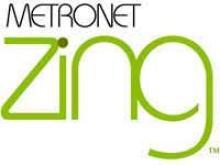
Fast, affordable Internet access for all.

Indiana's Metronet Zing winds its way through South Bend, Mishawaka and St. Joseph County providing dark fiber service to businesses, government and education. The project started as an economic development initiative when community leaders in the area realized that the high cost and lack of high-speed connectivity in the area kept businesses away.
Project Future, the economic development organization serving South Bend, Mishawaka and St. Joseph County until 2012, studied the potential benefits that might flow from better telecommunications in the region. The nonprofit inspired the county Chamber of Commerce, local government, nearby universities, healthcare, and businesses to develop a new nonprofit network model. The 100 mile network offers a dark fiber open access model that encourages competition, keeping prices in check. Nineteen carriers deliver services over the network. Average price for 1 gig service is $1,000 per month.
In the early 2000s, South Bend leaders wanted to take advantage of the regional long-haul fiber that runs directly under South Bend. There was very limited access to fiber connections in the area from providers and rates were high. St. Joseph's County, city government, and the University of Notre Dame needed better, faster, more reliable telecommunications.
A study commissioned by nonprofit Project Future confirmed what community leaders suspected. Education, economic development, healthcare, research and a better quality of life in South Bend depended on the community's access to a dark fiber network. Project Future developed a plan that would involve public investment in an open access dark fiber network. Community leaders joined together to form nonprofit St. Joe Valley Metronet, Inc. in 2004. Metronet's purpose was to build the infrastructure the region so desperately needed. Revenue would be passed back to the community through reasonable rates.
South Bend and nearby Mishawaka owned fiber networks that ran through conduit to serve the cities' traffic monitoring systems. New fiber, dedicated to the telecommunications network, would be installed in the conduit to reduce the need for excavation. The community did not want to be a telecommunications provider but no existing ISPs wanted to deliver services via publicly owned infrastructure. Metronet, Inc. would need to take on the role.

Funding for the project began with contributions from the University of Notre Dame, Memorial Health Systems, St. Joseph Regional Medical Center, South Bend Medical Foundation, Teachers Credit Union, Robert Bosch Corp. and Madison Center. In exchange, these organizations would receive 10 years of access to the network. The initial subscribers contributed over $2 million which funded the first phase of the network.
In order to attract employers, the group established SJVM, Inc. to serve only business clients. SVJM, Inc. is a for-profit enterprise that pays income and property taxes like other ISPs. Metronet serves only government and educational entities.
As the network develops, its leadership expands economic development strategies. From the website:
Benefits are not reserved to large business and institutional users. Metronet continues to find new and better ways to foster economic and community development. More multi−tenant buildings are connecting to Metronet, providing service and savings to small and medium−size businesses. The Socially Responsible Computing Initiative uses Metronet as the backbone of a project allowing nonprofit organizations to share IT services and realize significant savings on telecommunications and internet access costs.
Teachers Credit Union, one of the many locally based businesses on the network:
"The Metronet is what connects all our information and keeps it moving smoothly and efficiently," says [President Rick] Rice. "While that is a significant benefit of the Metronet, another important advantage is the big savings in cost."
As subscribers of the Metronet, the Teachers Credit Union saves approximately $6,000 in cost each month, compared to the costs of its prior service, for an annual savings of $72,000. "We estimate that due to our switch to the Metronet, we will ultimately gain a total savings of $250,000 to $300,000 each year," says Rice.
Notre Dame, Indiana University South Bend, and Saint Mary's College use Metronet Zing's underground network. The St. Joseph County Public Library pays only one-third of its pre-Metronet connectivity costs to serve over 125,000 patrons. Several large healthcare clinics need the high capacity for telehealth services and to consolidate past networks that operated independently. Metronet's video shares the story of Riverland Medical Center that uses the network for advanced healthcare applications.
